Kingdom Animalia Subphylum Vertebrata Suborder Serpentes Scientific name Bitis cornuta Rank Species | Phylum Chordata Order Squamata Family Viperidae Higher classification Bitis | |
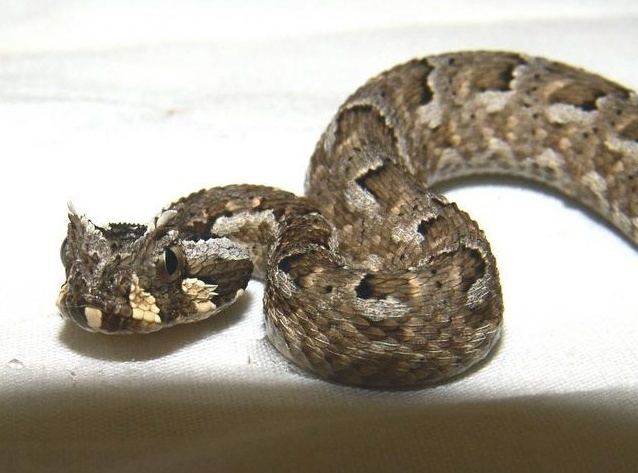 | ||
Similar Bitis, Snake, Vipers, Bitis caudalis, Reptile | ||
Baby bitis cornuta many horned adders
Bitis cornuta is a venomous viper species found in certain rocky desert areas, mostly along the Atlantic coast of southern Africa. They have characteristic tufts of "horns" above each eye. Two subspecies are currently recognized, including the nominate subspecies described here.
Contents
- Baby bitis cornuta many horned adders
- Description
- Common names
- Geographic range
- Habitat
- Behavior
- References
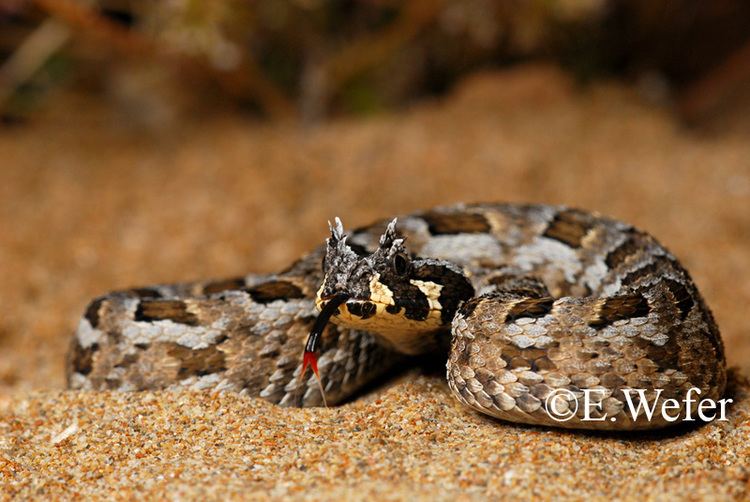
Description
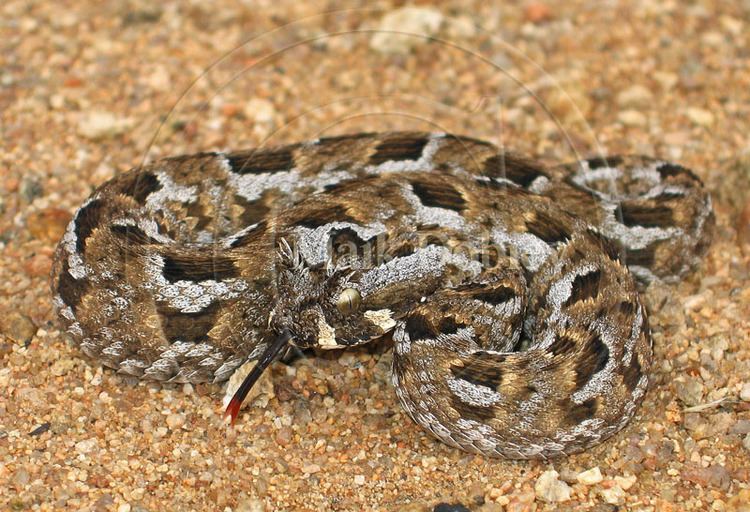
Small and stout, they grow to an average total length (body + tail) of 30–50 cm (about 12-20 inches). The maximum recorded total length is 75 cm (30 in) for a captive specimen.
There are two to five raised horn-like scales above each eye.
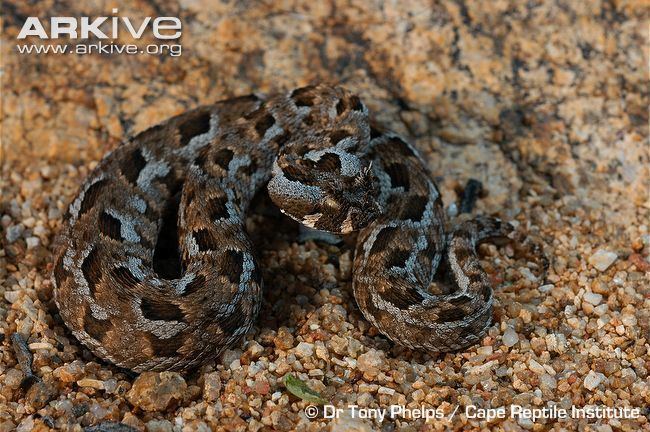
Dorsally, it has a grey to reddish brown ground colour, overlaid with four longitudinal series of large dark brown blotches, which are squarish or parallelogram-like in shape, and edged with white. Ventrally, it is whitish or tan, either uniform or speckled with dark brown. On the dorsal surface of the head are dark symmetrical markings which may form an arrowhead.
Common names
Common names include many-horned adder, hornsman, western hornsman adder, and western many-horned adder.
Geographic range
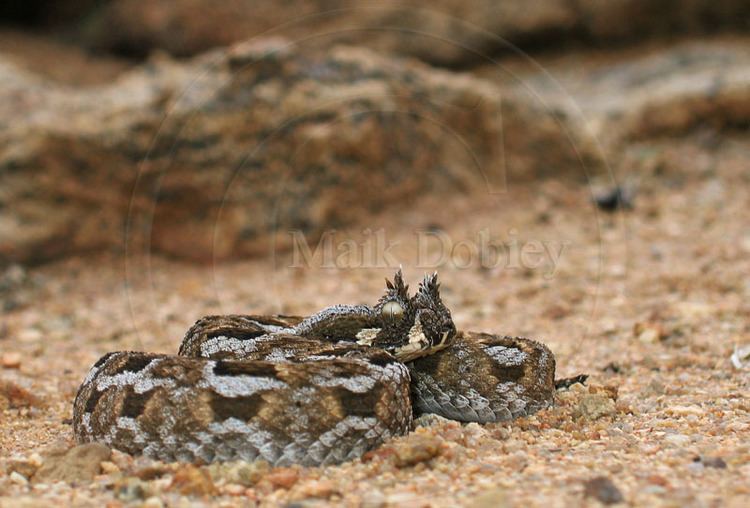
The many-horned adder ranges from the coastal region of southwest Namibia through west and southwest Cape Province in South Africa, with a few isolated populations in eastern Cape Province.
The type locality given is "Cap de Bonne-espérance" (Cape of Good Hope, South Africa). Actually, according to Patterson's itinerary, the type was observed in coastal Namaqualand, on 1 September 1779.
Habitat
This species prefers rocky desert areas in dwarf succulent veld and mountain slopes in heathland vegetation.
Behavior
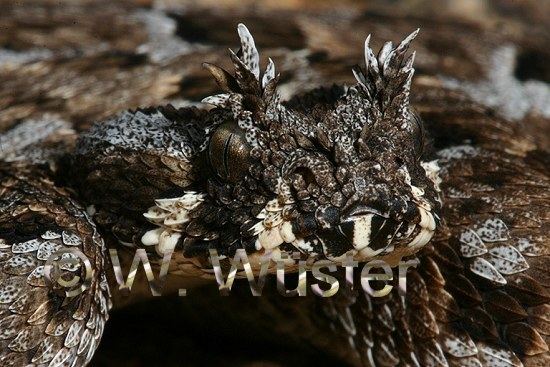
With a nervous disposition, when disturbed, it will hiss loudly and strike so energetically that most of its body is lifted off the ground in the process. However, it usually settles down in captivity.
